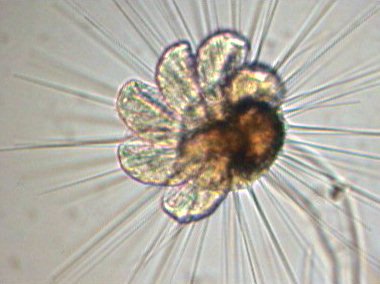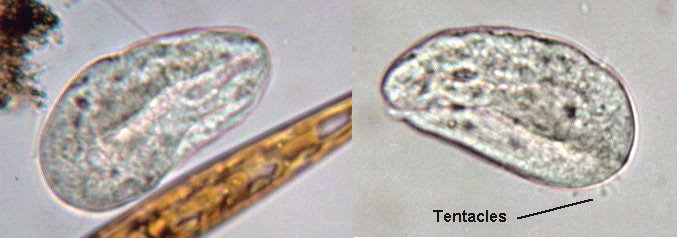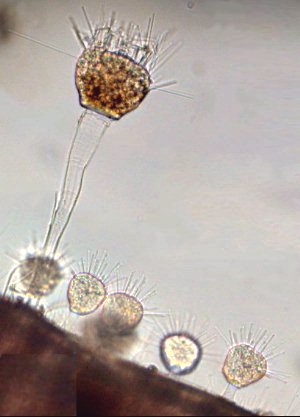| Young suctorians have cilia but they lose them when they become sessile. For this reason they are classified as CILIOPHORA / PHYLLOPHARYNGEA. These keywords are useful for searches on the Web. Unfortunately they are difficult to identify in this early state. | |
| Indeed, one of the most intriguing things about them is their reproductive process. If suctorians are classified as ciliates, it's because they can produce several ciliated offspring, for example by budding and also because they possess both a macronucleus and a micronucleus like ciliates. | |
| Another sub-species which I had collected, but without a lorica this time, illustrates perfectly the reproduction process. Some individuals were attached to a Bugula and one of them was budding. Click HERE to see an animation (time lapse sequence original duration 15 min) which shows budding and release of the 'youngsters'. | |
 |
This sort of flower is the 'mother' suctoria and the 'petals' are the young larvae, which are ready to leave the mother. In real time, it was possible to see cilia beginning to move on each larva. |



